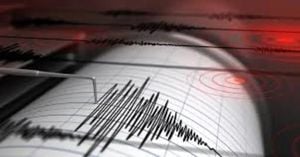The Leggett-Garg Inequality (LGI) has long been a point of fascination and a crucial tool in quantum mechanics, largely due to its role in probing the weirdness of the quantum world. A recent study by researchers from Austria and France demonstrated a clear violation of this inequality using neutrons, shining a light on the quantum behavior of these particles and adding to our understanding of macroscopic realism and its limitations.
At the heart of this study is the concept of macroscopic realism - the idea that a system's properties exist independently of measurement, and that these properties can be measured without disturbing the system. LGIs, much like the better-known Bell inequalities, are instrumental in testing the validity of this concept. Originally proposed by A.J. Leggett and Anupam Garg in 1985, the LGI was designed to distinguish between quantum systems and those which adhere to macroscopic realism.
Quantum mechanics predicts that under certain conditions, the LGI will be violated, meaning that the measured correlations between different states of a system at different times cannot be explained by any theory that adheres to macroscopic realism. In other words, such violations highlight the inherently quantum nature of the system.
The researchers conducted their experiment using neutron interferometry. In simpler terms, they used a device that splits a beam of neutrons into two paths, allowing the particles to interfere with themselves. This setup enables the precise control and measurement of the quantum states of the neutrons. The team implemented ideal negative measurements, a critical technique for ensuring that the measurement process itself does not disturb the system - a requirement for testing the LGI.
The results were compelling. The team found significant violations of the LGI, with a maximum violation measured at K = 1.120 ± 0.007, exceeding the classical limit of 1. This level of violation corresponds to an 18 standard deviation discrepancy from what would be expected if macroscopic realism held true.
But what does this mean beyond the laboratory? For one, these findings reinforce the principle that quantum mechanics provides a more accurate description of nature even at scales where classical physics was once deemed sufficient. This has broad implications, from enhancing our understanding of fundamental physics to shaping future technologies. Quantum computing and quantum cryptography, for instance, rely on principles that emerge directly from these kinds of quantum behaviors.
Expanding on the methods, the researchers used an interferometric setup equipped with phase shifters and absorbers to manipulate the neutron beams. By carefully tuning these components, they could isolate and measure the effects of the quantum state evolution of the neutrons over time. The neutron detectors used were highly efficient, ensuring that the measurements were reliable and accurate. The experimental configuration allowed for the determination of the correlation functions at different times, which are central to calculating the LGI parameter K.
One standout feature of the study is the use of ideal negative measurements. Typically, in quantum experiments, the act of measuring a system can influence its state, making it challenging to maintain non-invasiveness. In this setup, the researchers managed to circumvent this by designing a scenario where the absence of a neutron in a certain path (detected by the presence in another path) provided the necessary measurement information without disturbing the system.
“The interferometric scheme applied in the present work is not limited neutrons, but is in fact completely general and can be used for any quantum particle with nonzero or even zero mass,” the study noted, suggesting broader applications for their methods in future research involving different particles.
The significance of this study lies not just in the violation of the LGI, but in the robustness and clarity of the experimental design. The use of advanced interferometric techniques and high-efficiency detectors represents a significant step forward in our ability to test fundamental principles of quantum mechanics.
Every study has its limitations, and this one is no exception. The researchers highlighted the 'detection loophole' as a potential issue, although it was largely mitigated by the high efficiency of their neutron detectors. The fair sampling assumption - that the sample detected is representative of the whole - is also critical in such experiments, given the practical impossibility of detecting every particle. This necessity for assumption underlines the complexity and challenge inherent in experimental quantum physics.
Despite these challenges, the evidence presented is strong. The conclusive nature of the measurements, combined with the high degree of precision, paints a convincing picture of the quantum behavior of neutrons under the tested conditions. These findings open the door for further exploration into other quantum systems and applications.
Looking forward, this research sets the stage for even more intricate experiments, potentially involving more complex particles and interactions. The methodology developed here could be adapted and expanded upon to investigate other quantum phenomena, providing an ever-clearer window into the fundamental workings of our universe. Future studies could aim to reduce assumptions, improve detector efficiencies further, and explore the implications of LGI violations in various quantum systems. As technology advances, our ability to probe and understand the quantum world will only grow, leading to new discoveries and innovations based directly on the principles observed through studies like this one.
As the researchers aptly put it, “Our measurement results demonstrate a violation of an LGI by nσ = 18.0, while the absorberless measurements show no violation. Hence we conclude that neutrons in an interferometer must be understood quantum mechanically.” This conclusion not only underscores the importance of their findings but also the necessity of continuing to push the boundaries of quantum research.



